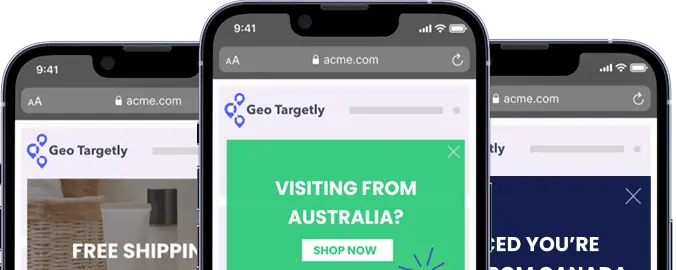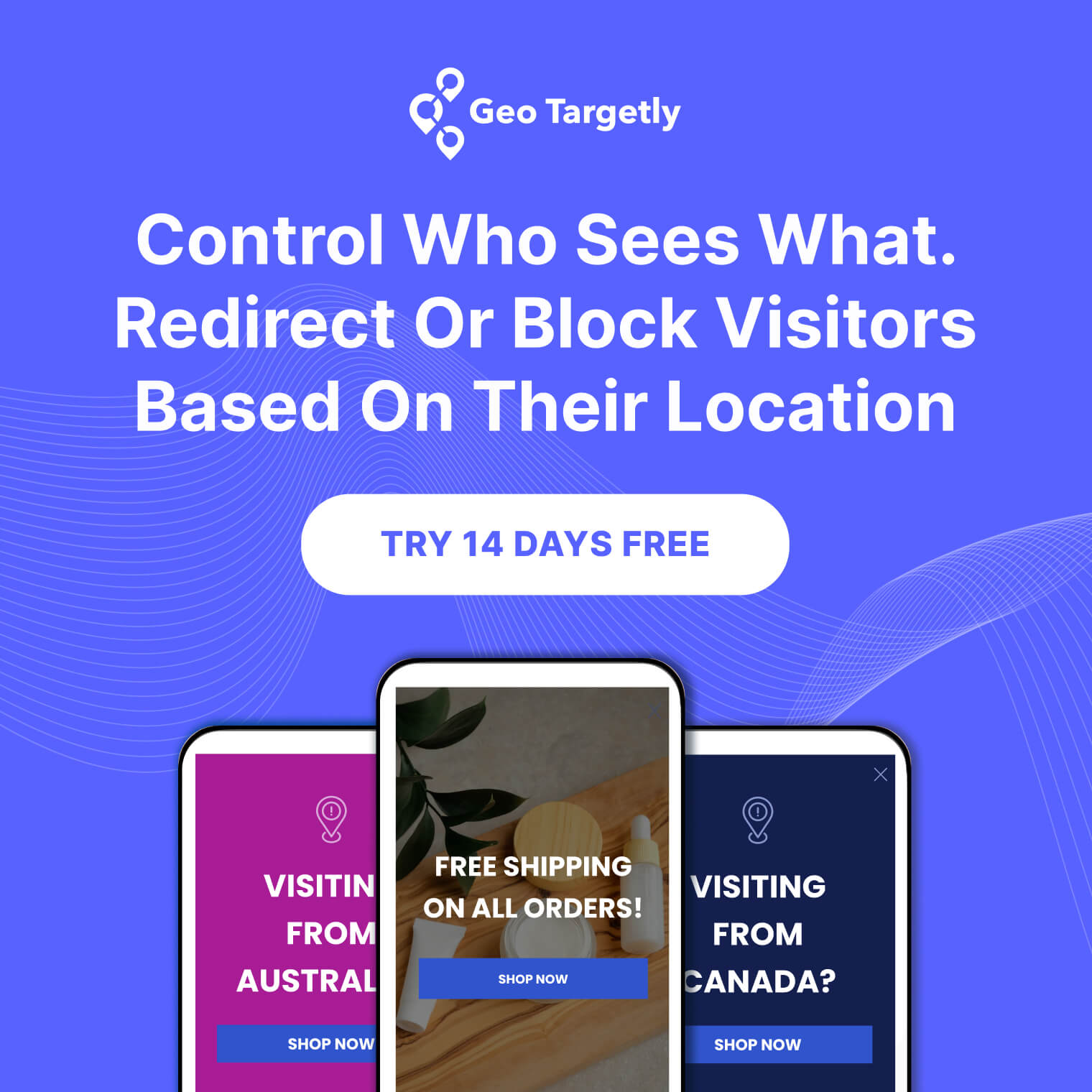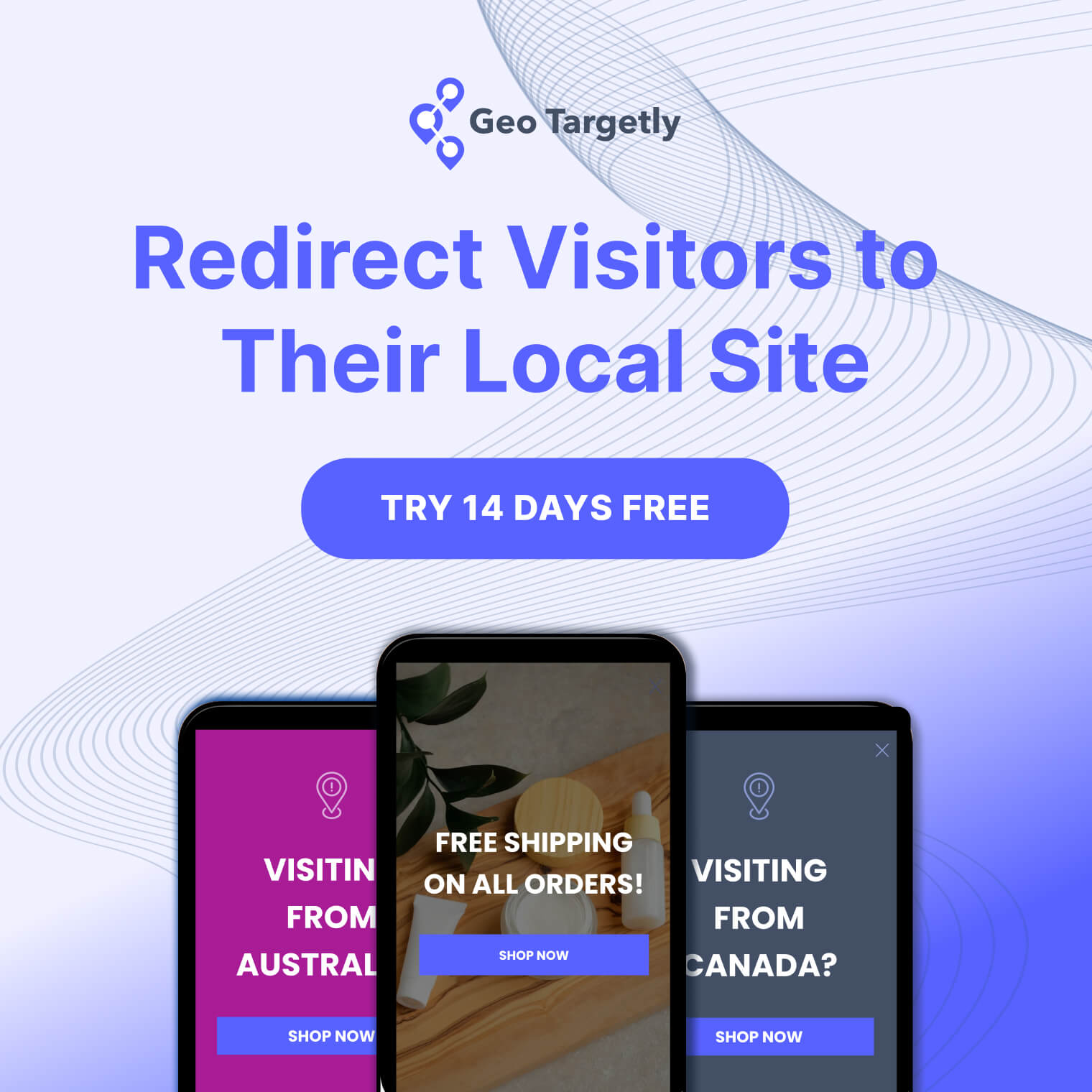

Key Takeaways
State-based redirects help your business:
- Serve relevant content to each visitor
- Improve conversions by showing localized offers and services
- Filter out leads from regions you do not serve
- Stay compliant with state-specific regulations and transparency requirements
If you’re doing business in the United States across state lines, you might have considered how visitors from your website from different US states consume your content. Does your site speak to all these visitors equally, or are there special considerations for different states that need to be taken into account when communicating with those users through your website?
Depending on what type of business you operate, the answer could very well be yes. There are a wide variety of reasons that businesses might have for talking to visitors from different states with different messaging. Whether it be different regulations, rules, or taxes that vary by state, or whether it merely comes down to limiting services based on travel. Your business should be able to indicate what services you can provide to visitors from other states.
That’s why, if you are intent on providing the best website experience to your visitors and customers, you should invest in a geo redirection service, like Geo Targetly. A service like this will give you redirect abilities that allow you to geo redirect based on your website visitors location. In this article, we’ll discuss redirecting visitors by state.
For service businesses - like plumbing, moving, or repair services - that operate across multiple U.S. states, redirecting visitors based on their state helps deliver tailored information (e.g., rates, availability, legal requirements). It not only enhances user experience, but also helps qualify leads automatically.
What is geo redirection?
Geo redirection is done by using a geolocation IP database. By detecting your visitor's location non-intrusively using their IP address, you can implement an IP redirect that will redirect visitors based on their geolocation. This allows you to specify a redirect website for each location for which you have special messaging and accommodation. Then when visitors reach your site from this location, you can redirect visitors to the page with the appropriate messaging for them.
Why would a business redirect visitors from different states?
This might all make sense to you, but you may still be wondering about the specific use case for your business. We’ll go over some examples so you can see how a service like this may be useful for your business’s website.
If you are running an e-commerce business in multiple states, you almost certainly have different shipping requirements, and tax requirements based on the state to which you are shipping. For example, if you are trying to be nationwide, you almost certainly have different shipping rates for Alaska and Hawaii than you do for any other state inside the continental united states. There is also the consideration for sales tax to take into account when considering ordering online. You may have a system to handle purchases on the back end and handle tax, but what if you want to display accurate shipping and tax rates to your users. This is where a redirection service like Geo Targetly would be precious to your eCommerce business.
If you are running a service business (moving, plumbing, electrical, repair etc.) in multiple states, you might need to indicate different rates or restrictions based on location. For example, if you don’t provide service to a state based on permits required, or distance to travel (despite the state potentially being adjacent) you’ll want to display that information to visitors from the state where you don’t provide service. Being able to convey information to users like this accurately is essential for providing value to your website visitors, and in this case, will save you valuable time by automatically working to qualify leads based on location.
Advantages of using state-based redirects
- Personalized messaging: Show only the states you serve, reducing irrelevant inquiries.
- Compliance & transparency: Alert visitors about restrictions or extra fees specific to their state.
- Efficiency: Automatically direct visitors to relevant content, saving time for both users and your team.
Step by step guide
That may all sound well and good, but how complicated is this kind of service to set up and configure. If you are running a business like the above, you most likely aren’t a resident expert when it comes to IP geolocation databases. No need to worry we’ll show you how to use a service like this with minimal setup and no technical expertise required.
If this sounds like the kind of service for you, we’ll show you how to get up and running using Geo Targetly in Just four easy steps.
Step one: create a state redirect rule
Use GeoTargetly’s dashboard to select U.S. states and the corresponding URLs (e.g., visitors from Texas yourdomain.com/tx-service).

Step two: add multiple state redirect rule
Add separate rules for different states or clusters of states, each pointing to the right content.

Step three: add an optional default redirect rule
For visitors outside defined states, use a default rule that routes them to a general page.

Step four: add code to website
Copy the JavaScript snippet into the <head> of your site - installation is plug‑and‑play.

Yes, it’s that easy. With just a few simple steps you are now able to redirect users based on their location by state letting you communicate pricing, and service information more clearly to users from various states, instead of trying to take a one size fits all approach that may leave you answering questions and providing support that would take away from you providing value to your business by delivering your core service.
Best practices & tips
- Choose automatic vs prompt-based redirects: GeoTargetly supports both. Using a prompt or announcement bar gives users control and avoids sudden URL changes.
- Whitelist bots & referrers: Prevent redirects for Googlebot and specific referral traffic to maintain SEO integrity
- Segment pages strategically: redirect pages like services, pricing, contact, or legal info.
- Maintain unique, crawlable URLs: For each state-specific version (e.g., example.com/tx/, example.com/ca/), create dedicated pages so Google can properly index them
Ensuring SEO-friendliness
Geo-redirection is SEO-safe when properly configured:
- Treat Googlebot like any other visitor - don’t exclude it from redirects.
- Use hreflang tags or geo-sitemap entries to signal regional intent.
- Avoid hiding or cloaking content; keep it consistent for crawlers and users alike.
- Let Google crawl each URL - state-specific pages should be accessible and shareable for proper indexing.
Quick Comparison: State vs City Redirects
Advanced features you might love
- Inclusion/exclusion logic: Redirect all U.S. visitors except Californians to a specific page or block an entire region/country from accessing your website byusing Geo Block
- IP, radius targeting: Go beyond state - target cities or regional areas with latitude/longitude filters
- Analytics tracking: Monitor how many redirects occur per state and page.
- Pass-through URL parameters: Keep query strings, subpaths, or UTM tracking intact during redirection
- Popup permission option: Show a customizable bar or modal that asks users to confirm redirection; ideal for ensuring transparency and user choice.
Conclusion
Doing business across state lines in the United States means that you might have to consider how visitors from your website from different US states consume your content. And depending on the type of business you run, there is an excellent chance that you already have to deal with customers from multiple states, and already have a process in place on the backend to handle
The special considerations involved. If your website speaks to all these visitors equally or doesn’t address special considerations for different states, you should think about how you might be missing out when it comes to providing the correct information to your visitors, and by providing them with the services they want and require.
There are a wide variety of reasons that businesses might have for talking to visitors from different states with different messaging. Regulations, rules, and taxes vary by state, and your business should be able to indicate what services you can provide to visitors from other states. You also might be limited based on travel or team size, so letting customers from other states know that you have limited capacities in those areas could be a valuable way for your business to prioritise leads.
If you’re intent on providing the best website experience to your visitors and customers, you should invest in a geo redirection service, like Geo Targetly. Use redirection as a tool to provide your customers with the most accurate information based on their location.
To start redirecting your visitors by state, claim your free trial now!





.webp)


































